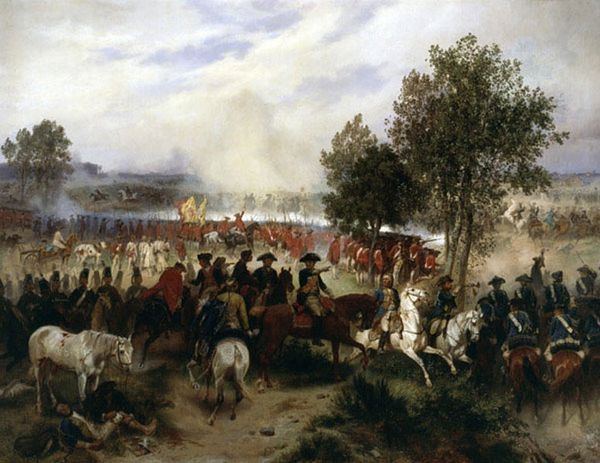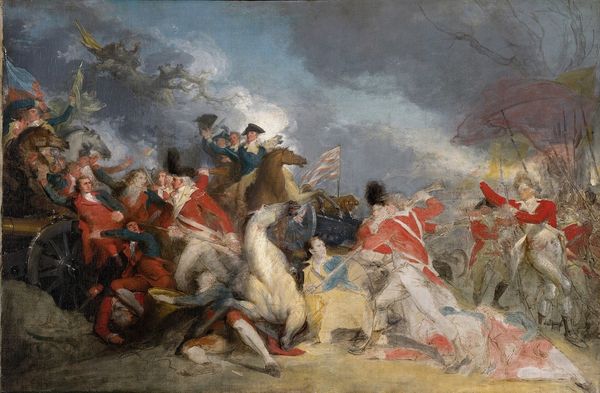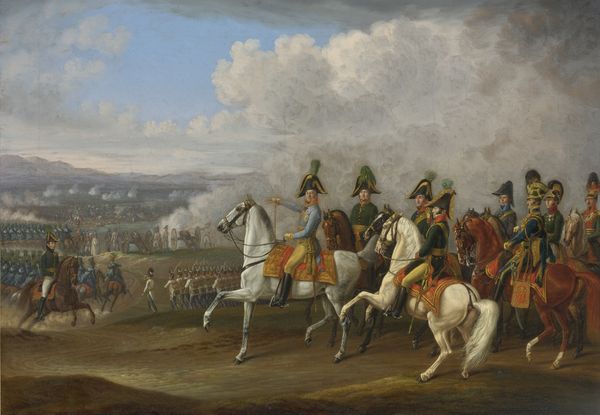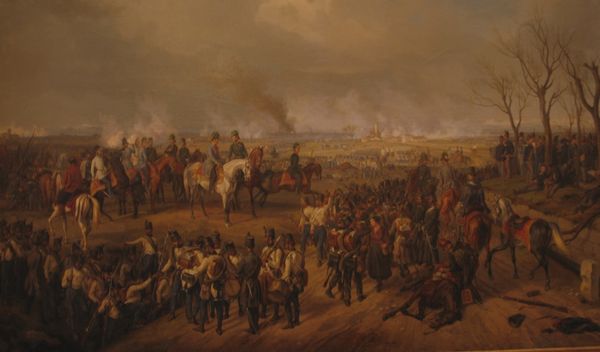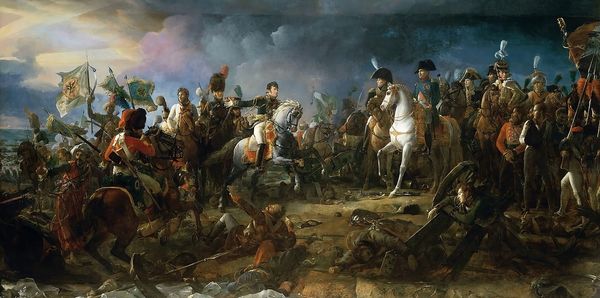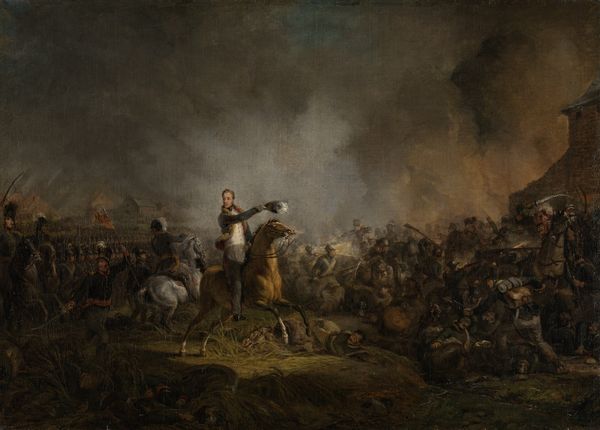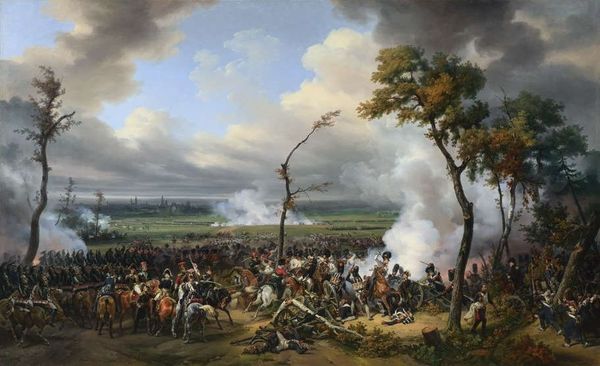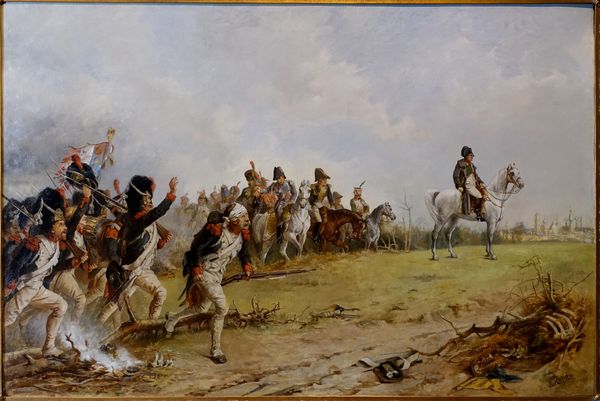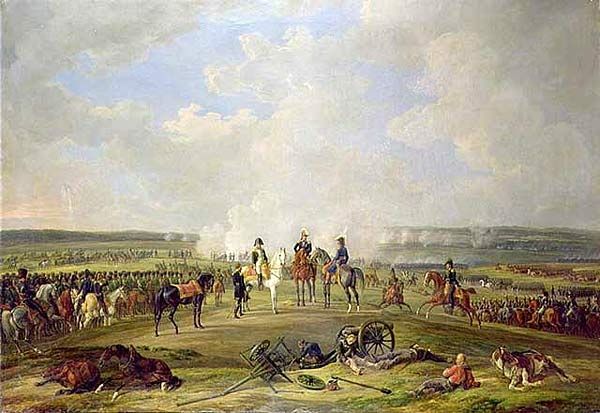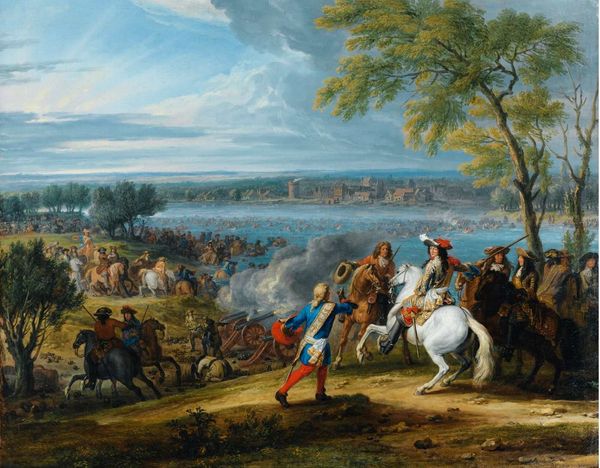
Copyright: Public domain
Editor: Here we have Thomas Jones Barker's "Napoleon at Waterloo," painted in 1879 using oil paint. My first impression is a chaotic scene, full of movement, but also tinged with a sense of impending doom. How do you interpret this work, seeing it through the lens of iconography? Curator: This painting is steeped in symbolism, reflecting the historical memory and cultural understanding of Waterloo. Notice how Napoleon, though central, is not idealized. The overall muted palette speaks to loss. Consider the iconography of the horse—traditionally a symbol of power, but here, its anxious posture mirrors the uncertainty of Napoleon himself. Does it strike you how the soldiers seem to turn their backs to Napoleon, or lie fallen on the battlefield? Editor: It does! The overturned bodies certainly evoke defeat. Were there specific symbols commonly associated with Napoleon that Barker might be playing with here? Curator: Precisely. The hat he carries suggests authority. Barker paints him bare-headed and with an air of thoughtfulness rather than determination. What does it say if a leader casts aside his hat and bares his head? Consider also how light falls across Napoleon while most of his men are shadowed by the field in battle: that creates contrast that adds meaning. This hints at the shift in public and cultural perception that had occurred by 1879, doesn't it? It reflects a critical, even tragic, view of Napoleon’s legacy. Editor: That's fascinating. I hadn't thought about the painting being made so long after the actual battle. The symbols used really convey the weight of history and changing attitudes. I now realize I looked at it as merely depicting that one singular historical moment of Waterloo. Thanks for illuminating how the painting captures shifting cultural memory about Napoleon's impact over time. Curator: My pleasure. Reflecting on such art deepens our grasp of symbols. It also fosters insightful observations about a subject from different points in time.
Comments
No comments
Be the first to comment and join the conversation on the ultimate creative platform.
